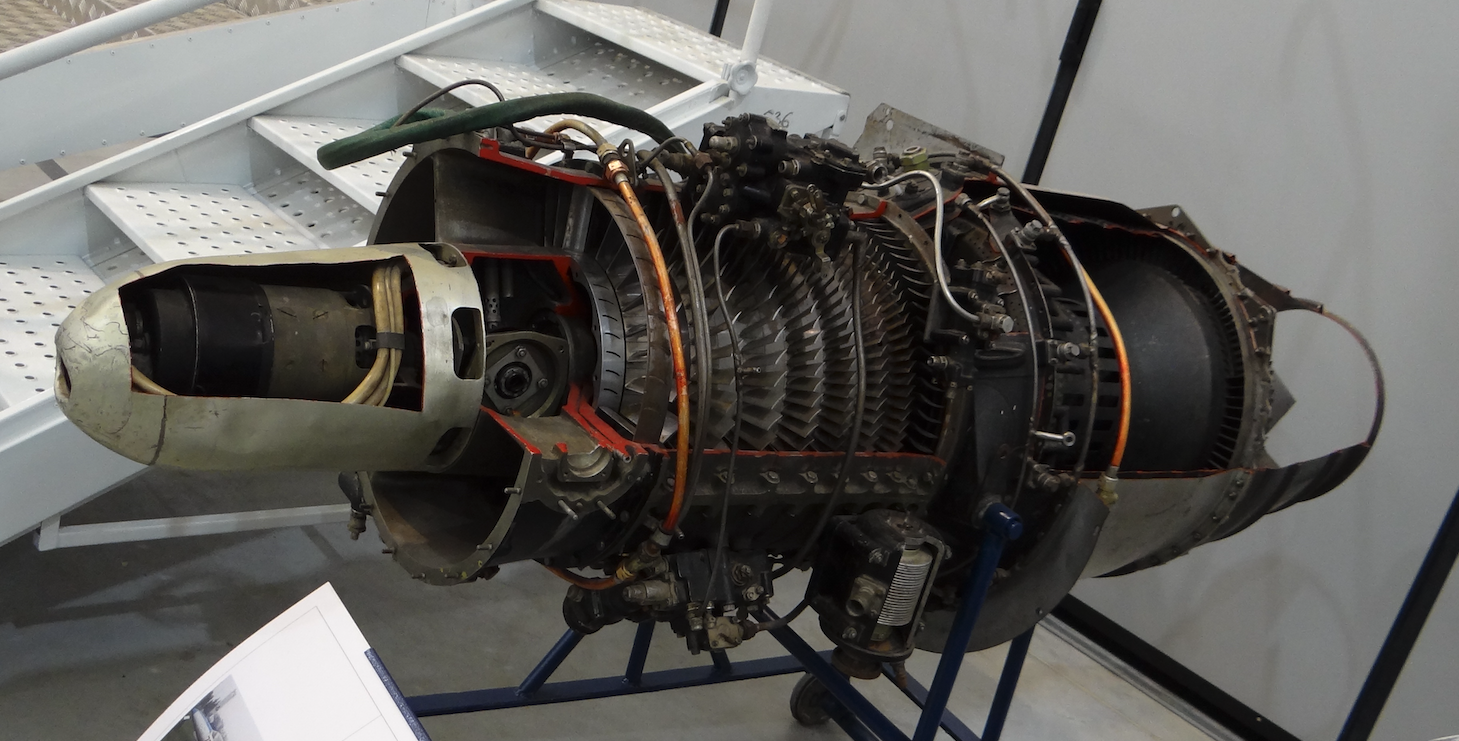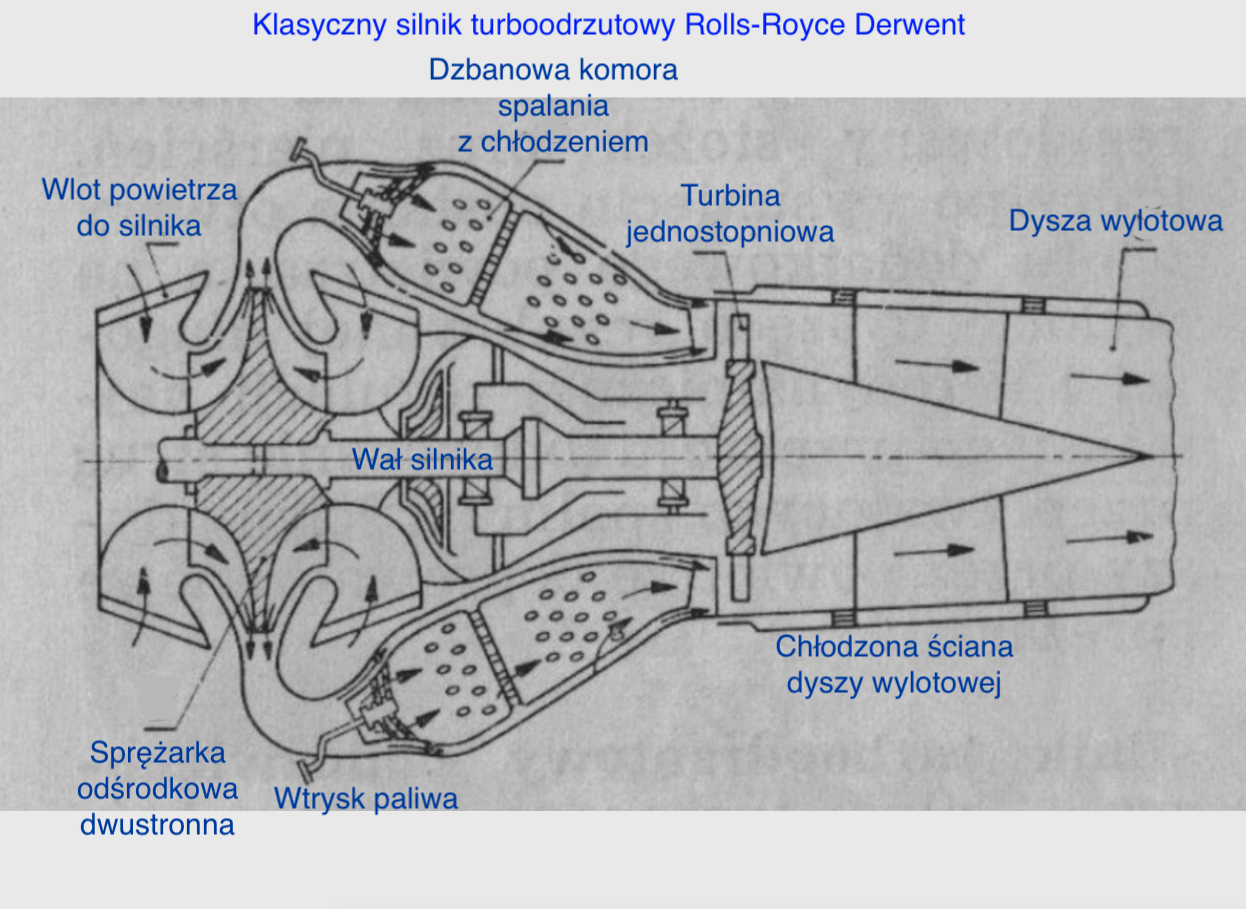Gas Turbine

How does a turbojet engine work?
Unlike rocket, jet and pulse engines, a turbojet engine produces power, or rather thrust, even when it is not in motion. This allows, similar to propeller-driven planes, to take off, taxi, take off, take off and land until parking.
Since a turbojet engine is a heat engine, all the laws of thermodynamics apply to it. The engine starts with an air gulp and an air intake duct. Its length and diameter are different and depend on the parameters of the turbojet engine and the speed achieved by the aircraft. The air intake is usually at the front of the fuselage or at the beginning of the engine nacelle. The rule of thumb is one breath of air for one engine. Of course, there are exceptions to the rule. The shape of the air grasp depends on many factors, but generally on the size of the engine (its air requirement) and the speed at which the plane is moving.
And finally we have the engine itself. The inlet to it is always round. Here, other motor equipment, such as a current-starter, can be centrally mounted. The oil installation of the shaft bearings has its connections. Here, there are also often aerodynamic blades of the air streams, which direct the air at the right angle to the first stage of the axial compressor. On the classic Whittle engine, this compressor air intake was annular (circumferential). This is due to the use of a double-ended centrifugal compressor. The effect of compression is an increase in air pressure, and also a significant increase in temperature. This can be an increase from 20 degrees C to 300 degrees Celsius. Compressing the air in the compressor causes its temperature to rise, which is not beneficial for the thermodynamic system. Perhaps in future turbojets there is a device that reduces the temperature of compressed air, similar to an intercooler.
The compressor is the first of the three essential parts of a turbojet engine. Its task is to compress the air before it enters the combustion chamber. The purpose of compression is to increase the amount of air, and more precisely to increase the amount of oxidant, which is one of the two basic substrates of the combustion process. In a specific case, it is oxygen (O2), of which we have about 21% in the air.
Compressed air goes to the combustion chamber. The Classic Whittle engine has 10-pitcher combustion chambers. Such an arrangement had the advantage that, with materials less resistant to high temperatures, it was possible to obtain a longer life of the combustion chamber by better cooling it. In the combustion chamber, fuel is injected, the mixture is formed and ignited. In a turbojet engine, the process of combustion of the mixture is a continuous process, not as in a reciprocating engine. The fuel is completely oxidized. There is a sharp increase in pressure and temperature. Temperature can be from 850 degrees Celsius in older designs, up to 2,000 degrees Celsius in modern and experimental designs.
Ignition initiation occurs initially via the ignition world. After ignition is initiated, the fire is automatically and continuously sustained. Combustion chambers are constructed differently. Initially, they were incandescent tubes, quickly replaced by tubular-jug-shaped combustion chambers.
The exhaust gas is very energetic and is directed towards the third element of the turbojet engine, the turbine blades. In this way, they transfer some of the energy to the rotation of the turbine, which sets the compressor in motion via the shaft. The outgoing exhaust gases have so much energy that they generate a thrust that causes translational movement by ejecting from the engine exhaust nozzle.

Written by Karol Placha Hetman
